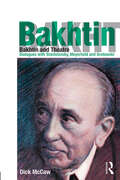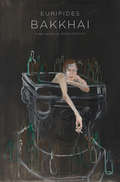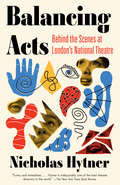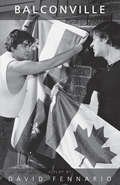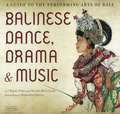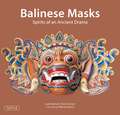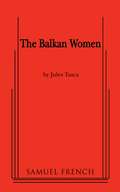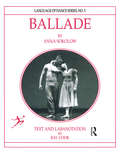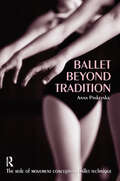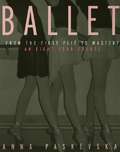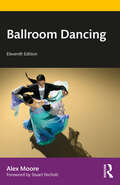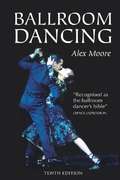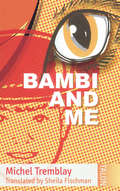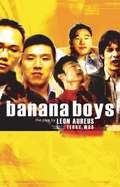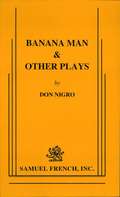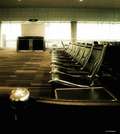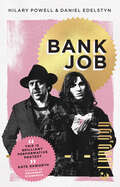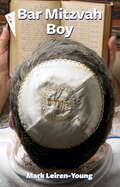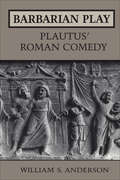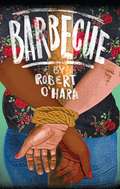- Table View
- List View
Bakhtin and Theatre: Dialogues with Stanislavski, Meyerhold and Grotowski
by Dick MccawWhat did Bakhtin think about the theatre? That it was outdated? That is ‘stopped being a serious genre’ after Shakespeare? Could a thinker to whose work ideas of theatricality, visuality, and embodied activity were so central really have nothing to say about theatrical practice? Bakhtin and Theatre is the first book to explore the relation between Bakhtin’s ideas and the theatre practice of his time. In that time, Stanislavsky co-founded the Moscow Art Theatre in 1898 and continued to develop his ideas about theatre until his death in 1938. Stanislavsky’s pupil Meyerhold embraced the Russian Revolution and created some stunningly revolutionary productions in the 1920s, breaking with the realism of his former teacher. Less than twenty years after Stanislavsky’s death and Meyerhold’s assassination, a young student called Grotowski was studying in Moscow, soon to break the mould with his Poor Theatre. All three directors challenged the prevailing notion of theatre, drawing on, disagreeing with and challenging each other’s ideas. Bakhtin’s early writings about action, character and authorship provide a revealing framework for understanding this dialogue between these three masters of Twentieth Century theatre.
Bakkhai
by Anne Carson EuripidesA stunning, new translation by the poet and classicist Anne Carson, first performed in 2015 at the Almeida Theatre in London Anne Carson writes, “Euripides was a playwright of the fifth century BC who reinvented Greek tragedy, setting it on a path that leads straight to reality TV. His plays broke all the rules, upended convention and outraged conservative critics. The Bakkhai is his most subversive play, telling the story of a man who cannot admit he would rather live in the skin of a woman, and a god who seems to combine all sexualities into a single ruinous demand for adoration. Dionysos is the god of intoxication. Once you fall under his influence, there is no telling where you will end up.”
Balanchine: A special issue of the journal Choreography and Dance
by Robert P. CohanThis detailed portrait of George Balanchine presents new approaches to his choreography. The book examines Balanchine from diverse perspectives and discusses unexplored aspects of his work, such as the notion of Balanchine as an architect, and his experiments with the African-American dance tradition. The articles complement and reinforce each other, taking interdisciplinary perspectives and encouraging a reexamination of, and expansion of, existing opinions.
Balancing Acts: Behind the Scenes at London's National Theatre
by Nicholas HytnerFrom the Tony Award and Laurence Olivier Award-winning former director of London's National Theatre--this is a fascinating, candid, eloquent memoir about his career directing theater, producing films and opera, and working closely with some of the world's most celebrated actors. The list of Nicholas Hytner's accomplishments is long and distinguished: as Artistic Director of London's National Theatre from 2003-2015, he directed and produced a great number of their most popular and memorable plays and musicals, many of which have come to Broadway: Carousel, Richard Bean's One Man, Two Guvnors, David Hare's Stuff Happens among them. He directed both the London and Broadway productions of Miss Saigon, each of which ran for ten years. He directed Alan Bennett's The Madness of George III on both stage and screen. In short: He is one of today's most successful and admired theatrical impresarios. In Balancing Acts, Hytner gives us a detailed behind-the-scenes look at his creative process. From reviving classic musicals and mastering Shakespeare to commissioning new plays, he shows theater making to be a necessarily collaborative exercise, and he writes insightfully about the actors and playwrights he's worked with: Derek Jacobi, Richard Griffiths, Helen Mirren, Maggie Smith, Michael Gambon, Harold Pinter, and Tom Stoppard among them. With a cultural range that spans from The Mikado to The Lady in the Van, Balancing Acts is not only a memoir but a gathering of illuminating notes on the art of directing and a thoughtful meditation on the purpose of theater.
Balconville
by David FennarioBalconville is Canada's first bilingual play. Three families and Thibault, the neighbourhood delivery boy, sit on their balconies in the heat of a Montreal summer. It is election time and Gaétan Bolduc is running for re-election for the Liberals. His broadcast truck roams the streets making election promises in English and in French, and playing the music of Elvis Presley. The English and the French-Canadian working class take on the Establishment in this award-winning play.
Balinese Dance, Drama & Music
by Rucina Ballinger I Wayan Dibia Barbara AnelloThis book is a lavishly illustrated introduction to the most commonly seen forms of traditional performing arts in Bali; gamelan music, dance, drama and puppetry. Ideal reading for visitors to the island as well as for anyone interested in Balinese culture. The book presents the history and function of each type of performance with illustrations and photographs to aid in identification. Introductory sections discuss the way performing arts are learned in Bali and the principal Balinese values that are passed on in these forms, as well as some of the basic religious and cultural tenets that are expressed in the arts and the functions of the forms themselves.This book is enhanced with a bibliography and discography and over 200 photographs and specially prepared watercolors of Balinese performances.
Balinese Dance, Drama & Music
by Rucina Ballinger I Wayan Dibia Barbara AnelloThis book is a lavishly illustrated introduction to the most commonly seen forms of traditional performing arts in Bali; gamelan music, dance, drama and puppetry. Ideal reading for visitors to the island as well as for anyone interested in Balinese culture. The book presents the history and function of each type of performance with illustrations and photographs to aid in identification. Introductory sections discuss the way performing arts are learned in Bali and the principal Balinese values that are passed on in these forms, as well as some of the basic religious and cultural tenets that are expressed in the arts and the functions of the forms themselves.This book is enhanced with a bibliography and discography and over 200 photographs and specially prepared watercolors of Balinese performances.
Balinese Masks
by Paul Schraub Hildred Geertz Judy SlattumMasked performances are an ancient and integral part of Balinese rituals. A great variety of Bali's masks, many of them sacred and rarely displayed, are represented in this book. The spectacular detail and craftsmanship of the masks, their artistry, symbolism, religious significance, and manufacture, will take readers on a fascinating journey into the sacred rituals of Bali.
Balkan Women
by Jules TascaFull Length, Drama / 2m, 3f, chorus / Simple set. This meditation on the horror of war set in 1990 brings the spirit of Euripides to a Serbian detention camp for Muslim women. Men are pitted against women, Christians against Muslims, and Croats against Serbs in a drama that bares the inner conflicts that result when society is governed by illogical ethnic hatreds. A hard boiled, devoutly Christian guard is torn by conflicting inner voices as he interrogates a prisoner and her mother about an explosion that killed sixteen of his soldiers. The arrival of a new, wounded camp commandant triggers murder and inevitable catastrophes reminiscent of ancient tragedy. "Theatrically bold and politically moving.... The dialogue has an odd and effective stateliness, as though we're listening to a translation of an ancient work." Variety. Winner of the 1997/98 Barrymore Award for Best New Play.
Ballade by Anna Sokolow (Language of Dance #No. 5)
by Ray CookFirst Published in 1993. Routledge is an imprint of Taylor & Francis, an informa company.
Ballet Beyond Tradition
by Anna PaskevskaFor nearly a century, the training of ballet and modern dancers has followed two divergent paths. Modern practitioners felt ballet was artificial and injurious to the body; ballet teachers felt that modern dancers lacked the rigorous discipline and control that comes only from years of progressive training. Ballet Beyond Tradition seeks to reconcile these age-old conflicts and bring a new awareness to ballet teachers of the importance of a holistic training regimen that draws on the best that modern dance and movement-studies offers.
Ballet: From the First Plie to Mastery, An Eight-Year Course
by Anna PaskevskaFirst published in 2002. Routledge is an imprint of Taylor & Francis, an informa company.
Ballroom Dancing
by Alex MooreNow in its eleventh edition, this classic and comprehensive handbook has been revised to bring it up to date with changes on the dance floor and in the rules of dance competitions.The Quickstep, Waltz, Foxtrot, and Tango are all illustrated and described in great detail, as well as the versions of most dances approved for championships. Diagrams demonstrate every step from both the Leader’s and Follower’s perspectives, and a collection of photographs new to this edition celebrate the diverse range of dancers involved with ballroom.This is the go-to book for dancers, competition judges, teachers, and anyone who needs to be at the forefront of today’s ballroom technique, from amateur practice to international championships.
Ballroom Dancing (Performing Arts Ser.)
by Alex MooreNow in its tenth edition, this classic and comprehensive handbook has been revised to bring it up to date in keeping with changes on the dance floor and in the rules of dance competitions. The Quickstep, Waltz, Foxtrot, and Tango are all illustrated and described in great detail.
Bambi and Me
by Michel TremblayBambi and Me consists of twelve autobiographical pieces about how movies shaped the young life of Michel Tremblay, one of their biggest fans. Among others, he talks about Twenty Thousand Leagues Under the Sea, Cinderella, Snow White and the Seven Dwarves, Parade of the Wooden Soldiers, Orphée and The Night Visitors, and about how each led to his discovery of his emerging emotional sensibilities as a child and an adolescent. In the piece that gives the book its title, he writes: "Did you cry as much as I did at the death of Bambi's mother? Personally, I've never got over it." Bursting with wit, charm, and the profound resonance of youthful self-discovery, Bambi and Me provides Tremblay's many fans with a clear sense of the origins of the talent which has made Michel Tremblay one of the most important and fascinating playwrights and novelists of the twentieth century.
Banana Boys: The Play
by Leon AureusA smart, contemporary, and wickedly funny play about five young Asian Canadian men wrestling with issues of race, identity, and the death of a friend. Banana Boys is one story, fragmented into five and reconstructed throughout the course of the lives of the five young men it follows. Adapted from the novel by Terry Woo, Banana Boys is a “meditation for the restless” and a call to anyone who has felt out of place in the world.
Banana Man And Other Plays
by Don NigroA table and some chairs. In New York, in the summer of 1964, Buster Keaton appeared in a short experimental film written by Samuel Beckett. In this play, set in an Italian restaurant in Greenwich Village that summer, two gentlemen named Sam and Buster attempt to communicate with each other, with the unlikely help of a chattery young waitress with theatrical ambitions, who mistakes Buster for Moe from the Three Stooges and Sam for his agent. A funny and moving play about the quiet, absurd heroism of two apparently very different but very great artists. In Banana Man and Other Plays. FEE: $35 per performance.
Bangkok
by Elena Ceban Antonio Morcillo LopezÎntr-un aeroport pustiu, undeva în spațiul geografic spaniol, apare un bătrân misterios cu un bilet pentru Bangkok. Acolo se întâlnește cu unica persoană care lucrează în instituție: un paznic tânăr. Acesta îl informă despre imposibilitatea de a călători spre destinația aleasă, pentru că acolo nu sunt avioane și niciodată n-au fost. E vorba de un aeroport inaugurat de ceva timp, dar care niciodată nu a fost utilizat. Spre mirarea și la insistența călătorului, paznicul îl lasă să stea. Din acel moment începe un dialog între cei doi care nu doar va pune sub semnul întrebării viețile lor, funcțiile lor și situația politică în care sunt antrenați, ci și va revela, pas cu pas, adevărata natură a întâlnirii.Într-un aeroport pustiu, undeva în spațiul geografic spaniol, apare un bătrân misterios cu un bilet spre Bangkok. Acolo se întâlnește cu unica persoană care lucrează în instituție: un paznic tânăr. Acesta îl informă despre imposibilitatea de a călători spre destinația aleasă, pentru că acolo nu sunt avioane și niciodată n-au fost. E vorba de un aeroport inaugurat de ceva timp, dar care niciodată nu a fost utilizat. Spre mirarea și la insistența călătorului, paznicul îl lasă să stea. Din acel moment începe un dialog între cei doi care nu doar va pune sub semnul întrebării viețile lor, funcțiile lor și situația politică în care sunt antrenați, ci și va revela, pas cu pas, adevărata natură a întâlnirii.
Bangkok
by Antonio Morcillo Lopez Peter W DaviesIn Bangkok,a single act play, Antonio Morcillo Lopez narrates the relationship between a security guard of an abandoned airport somewhere in Spain and an elderly passenger who arrives at the airport with a ticket and luggage and the intention to fly to Bangkok. An extended dialogue ensues between the two covering a wide range of themes. With the use of ample black humour, sarcasm and irony Morcillo presents a fierce critique of the political and economic situation in Spain and a system which has created grotesque situations.
Bangkok
by Antonio Morcillo Lopez Débora Filipa Mendes Madeiran/a livro para traduzir não continha descripção livro para traduzir não continha descripção
Bangkok
by Antonio Morcillo Lopez Ieie PaolaIn un aeroporto vuoto del territorio spahnolo appare un misterioso aniano con un biglietto per andare a Bangkok. Lì incontra l'unica persona che lavora nella struttura: una giovane guardia fi dise encuentra con la única persona que aún trabaja en las instalaciones: un joven guardia di sicurezza. Questi lo ingorma dell'impossibilità di realizzare il viaggio pianificato: lì non ci sono, non ce ne somo mai stati. Si tratta di un aeroporto inaugurato da molto tempo, ma mai operativo. Davanti all'incredulità e all'insistenza del vecchio, la guardia di sicurezza gli permette di fermarsi. A partire da quel momento, inizierà tra i due un dialogo in cui non sol discuteranno delle proprie vite, dei rispettivi lavori e della situazione politica in cui sono immersi, ma sveleranno anche la vera natura del loro incontro.
Bank Job
by Hilary Powell Daniel EdelstynArt hacks life when two filmmakers launch a project to cancel more than £1m of high-interest debt from their local community. Bank Job is a white-knuckle ride into the dark heart of our financial system, in which filmmaker and artist duo Hilary Powell and Dan Edelstyn risk their sanity to buy up and abolish debt by printing their own money in a disused bank in Walthamstow, London. Tired of struggling in an economic system that leaves creative people on the fringes, the duo weave a different story, both risky and empowering, of self-education and mutual action. Behind the opaque language and defunct diagrams, they find a system flawed by design but ripe for hacking. This is the inspiring story of how they listen and act upon the widespread desire to change the system to meet the needs of many and not just the few. And for those among us brave enough, they show how we can do this too in our own communities one bank job at a time.
Bar Mitzvah Boy
by Mark Leiren-YoungMark has had books published by Anvil Press, Knopf, Greystone Books, Orca Books, and more.
Barbarian Play: Plautus' Roman Comedy
by William AndersonIn this volume William S. Anderson sets Plautus, who wrote Rome's earliest surviving poetry, in his rightful place among the Greek and Roman writers of what we know as New Comedy (fourth to second centuries). Anderson begins by defining major innovations that Plautus made on inherited Greek New Comedy (Menander, Philemon, and Diphilus), transforming it from romantic domestic drama to a celebration of rollicking family anarchy. He shows how Plautus diminished the traditional importance of love and replaced it with a new major theme: 'heroic badness,' especially embodied in the rogue slave (ancestor of the impudent servant, valet, or maid). Anderson then examines the unique verbal texture of Plautus' drama and demonstrates his revolt against realism, his drive to have his characters defy everyday circumstances and pit their intrepid linguistic wit against social order, their Roman extravagant impudence against Greek self-control. Finally, Anderson explores the special form of metatheatre that we admire in Plautus, by which he undermines the assumptions of his Greek 'models' and replaces them with a new, confident Roman comedy.
Barbecue / Bootycandy (TCG Edition)
by Robert O'HaraSutter is on an outrageous odyssey through his childhood home, his church, dive bars, motel rooms, and even nursing homes. The journey uncovers characters who are at once fascinating, zany, controversial, and even a bit smutty, painting a portrait of life as a societal outlier. Based on the author's personal experience, Bootycandy is a kaleidoscope of sketches that interconnects to portray growing up gay and black. This subversive, uproarious satire crashes headlong into the murky terrain of pain and pleasure and . . . BOOTYCANDY!
